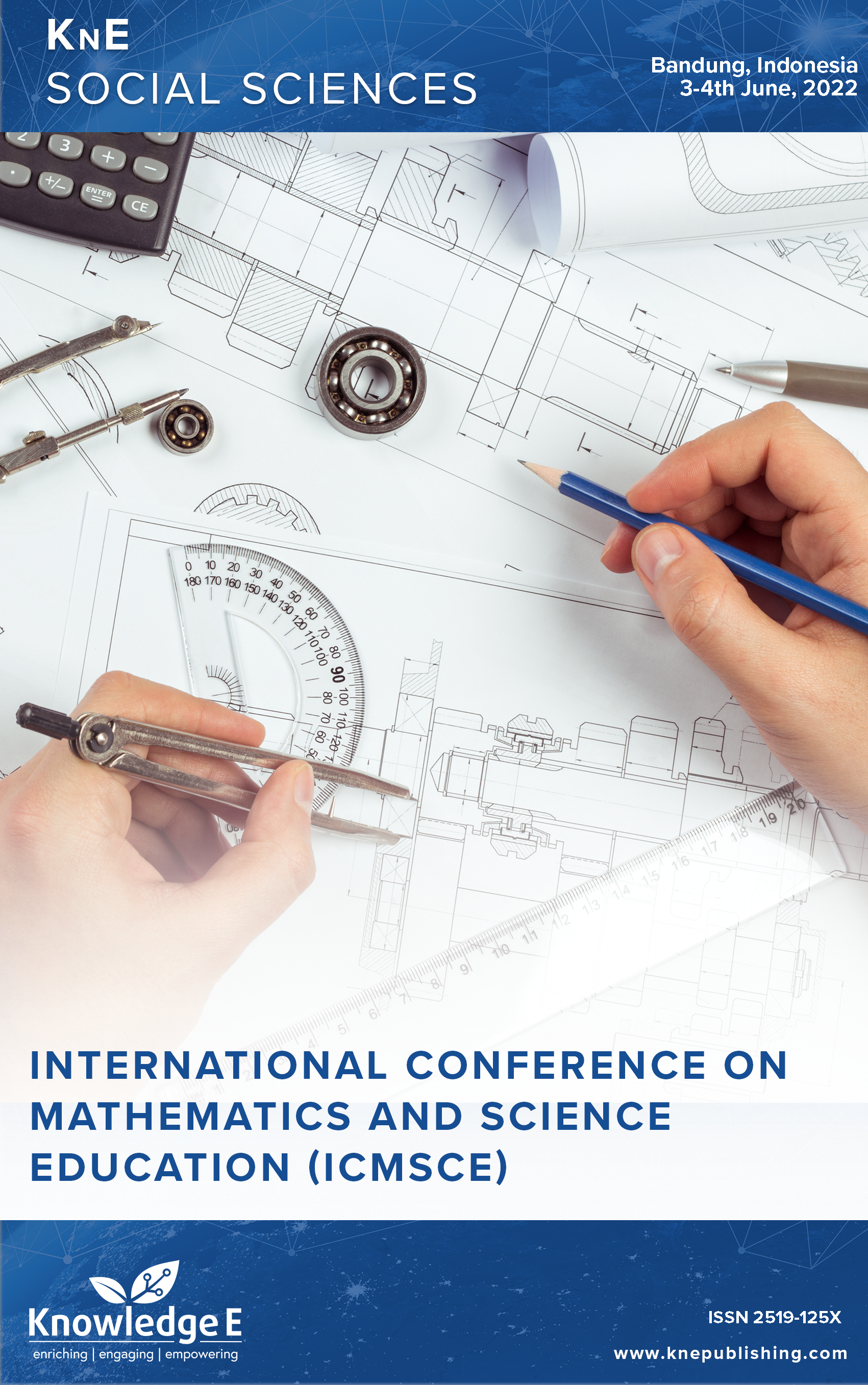Analyzing the Implementation of Practicum Organic Compound Separation and Purification in the Chemistry Education Study Program
DOI:
https://doi.org/10.18502/kss.v9i13.16067Abstract
Students acquire various skills in the laboratory through scientific development practices such as demonstrations and experiments. The primary objective of this study is to gather empirical data regarding the implementation of organic compound separation and purification techniques at tertiary educational institutions to examine their efficacy as a proactive step to facilitate ongoing educational endeavors. The elements discussed include the practicum topics completed, the organic chemistry instruments and equipment possessed, how the practicum is conducted, and the problems and their resolutions. This study’s respondents included course instructors, chemistry lab assistants, and students previously attending practicum content. This study used a qualitative research methodology to analyze multiple chemistry education study programs across various locations in Indonesia. Data collecting methods include open-closed surveys, observation, and documentation. The findings indicated that the separation and purification practicum topic incorporates concepts related to separation and purification, employing extraction, chromatography, distillation, sublimation, and recrystallization techniques. Some chemistry education programs needed adequate instrumentation for organic chemistry. In addition, the wet laboratory practicum for separating and purifying the studied organic compounds are yet to be completed as per the planned topics. Green chemistry and project-based learning have been largely implemented in the practicum, but the micro-scale concept, which can help reduce practicum waste, are yet to be implemented. Inadequate tools and materials for the practicum, as well as inadequate reference materials, are some of the obstacles that hinder the practicum’s efficiency. Hence, there is a want for pragmatic instruments that can effectively cater to the demands of ongoing education. This practicum set should facilitate using green chemistry and micro-scale, focusing on minimizing pollution that can harm the environment.
Keywords: practicum organic, compound separation, purification, chemistry education
References
Rahman G, Fitriani Nasution R, Rizkina Lubis A, Novira P, Rahman L, Hartina Ria Sinaga E, et al. Analysis of constraints and alternative solutions to the implementation of chemical practicums in several high schools in Medan. Jurnal Pendidikan Kimia. 2020;12(1):44–51. DOI: https://doi.org/10.24114/jpkim.v12i1.17744
Maloney V, Szczepanski Z, Smith K. Introduction of a simple experiment for the undergraduate organic chemistry laboratory demonstrating the lewis acid and shape-selective properties of Zeolite Na-Y. J Chem Educ. 2017;94(9):1343–6. DOI: https://doi.org/10.1021/acs.jchemed.6b00662
Khoirunnisa F, Kadarohman A, Anwar S, Hendrawan H. Profile of understanding of education for sustainable development (ESD) and level of sustainability awareness among pre-service chemistry teachers. Journal of Engineering Science and Technology. 2022;17:42–9.
MacKellar JJ, Constable DJ, Kirchhoff MM, Hutchison JE, Beckman E. Toward a green and sustainable chemistry education road map. J Chem Educ. 2020;97(8):2104–13. DOI: https://doi.org/10.1021/acs.jchemed.0c00288
Cahyono B, Suzery M. Metode Pemisahan Bahan Alam. Jakarta: PT Kompas Ilmu; 2018.
Fauzi’ah L, Diniaty A. “Penerapan praktikum kimia organik berorientasi aplikasi (application-oriented).,” Jurnal Pendidikan Sains Indonesia. vol. 5, no. 1, p. 2017.
Vosburg DA. “Engaging undergraduates in sustainability education and research.,” ACS Symposium Series. vol. 1345, pp. 63–73, 2020. DOI: https://doi.org/10.1021/bk-2020-1345.ch006
Saputro E, Bobsaid A, Hutabarat M, Ariyanti D, Panjaitan R. Pengembangan metode pemurnian bioetanol dari berbagai jenis bahan baku. Jurnal Teknik Kimia. 2023;29(1):19–20. DOI: https://doi.org/10.36706/jtk.v29i1.1088
Anggraini T. Nurhamidah, and S. Rohiat, “Analisis hubungan pelaksanaan pratikum terhadap hasil belajar kimia siswa SMA negeri di Kota Bengkulu.,” Jurnal Pendidikan dan Ilmu Kimia. vol. 6, no. 1, pp. 28–34, 2022. DOI: https://doi.org/10.33369/atp.v6i1.20320
E. Ad’hiya, M.E. Haryani, R. Edi, and Anom, “Preliminary study on the development of project based learning inorganic chemistry practical instructions.,” International Journal of Chemistry Education Research. vol. 7, no. 1, p. 2023. DOI: https://doi.org/10.20885/ijcer.vol7.iss1.art7
Damayanti NK, Maryam S, Subagia IW. Analisis pelaksanaan praktikum kimia. Jurnal Pendidikan Kimia Undiksha. 2019;3(2):52. DOI: https://doi.org/10.23887/jjpk.v3i2.21141
Rahayu C, Eliyarti E. Deskripsi efektivitas kegiatan praktikum dalam perkuliahan kimia dasar mahasiswa teknik. Edu Sains Jurnal Pendidikan Sains & Matematika. 2019;7(2):51–60. DOI: https://doi.org/10.23971/eds.v7i2.1476
Sangia MS, Tanaumab A. Keselamatan dan keamanan laboratorium IPA. Jurnal MIPA UNSRAT Online. 2018;7(1):20–4. DOI: https://doi.org/10.35799/jm.7.1.2018.18958
Putri AC. Pengaplikasian prinsip-prinsip green chemistry dalam pelaksanaan pembelajaran kimia sebagai pendekatan untuk pencegahan pencemaran akibat bahan-bahan kimia dalam kegiatan praktikum di laboratorium. Journal of Creativity Student. 2019;2(2):67–73. DOI: https://doi.org/10.15294/jcs.v2i2.14585
S. Mulyanti and A. Kadarohman, “Students attitude towards green chemistry and its application.,” Journal of Physics: Conference Series. vol. 1806, no. 1, p. 2021. https://doi.org/10.1088/1742-6596/1806/1/012181. DOI: https://doi.org/10.1088/1742-6596/1806/1/012181
Anastas PT, Williamson TC. “Green chemistry: An overview.,” ACS Symposium Series. vol. 626, p. 1996. https://doi.org/10.1021/bk-1996-0626.ch001. DOI: https://doi.org/10.1021/bk-1996-0626
Dhabekar SS, Patil C. Green chemistry and micro scale technique: A move towards environment friendly approach. Int J Res Appl Sci Eng Technol. 2020;8(1):538–41. DOI: https://doi.org/10.22214/ijraset.2020.1099
Szafran Z, Singh MM, Pike RM. The philosophy of green chemistry as applied to the micro scale inorganic chemistry laboratory. Educ Quim. 2000;11(1):172–3. DOI: https://doi.org/10.22201/fq.18708404e.2000.1.66477
Singh MM, Szafran Z, Pike RM. Micro scale chemistry and green chemistry: complementary pedagogies. J Chem Educ. 1999;76(12):1684–6. DOI: https://doi.org/10.1021/ed076p1684
Pavia DL, Lampman GM, Kriz GS. A Micro scale Approach Organic. United States of America: Cengage Learning; 2018.
Mafumiko FM. The potential of micro-scale chemistry experimentation in enhancing teaching and learning of secondary chemistry: experiences from Tanzania classrooms. NUE Journal of International Educational Cooperation. 2008;3:63–79.
Mulyanti S, Kadarohman A, Ratnaningsih Eko S. “Green chemistry based: Development of substitution reactions experiments.,” AIP Conference Proceedings. vol. 2600, no. December, p. 2022. DOI: https://doi.org/10.1063/5.0112195
Mitarlis UA, Yonatha B. Pemanfaatan indikator alam dalam mewujudkan pembelajaran kimia berwawasan green chemistry. Jurnal Penelitian Pendidikan IPA. 2018;3(1):8. DOI: https://doi.org/10.26740/jppipa.v3n1.p1-7
Ravichandran S. Implementation of green chemistry principles into practice. Int J Chemtech Res. 2011;3(3):1046–9.
Hudha AM. “Analisis pengelolaan praktikum biologi di laboratorium biologi Universitas Muhammadiyah Malang.,” Jurnal Penelitian dan Pemikiran Pendidikan. vol. 1, no. 1, pp. 37–51, 2011.
Manalu HC, Silaban S, Hutabarat W. “The development of teaching materials stoichiometric integrated multimedia easy sketch.,” vol. 200, no. Aisteel, pp. 352– 356, 2018. https://doi.org/10.2991/aisteel-18.2018.77. DOI: https://doi.org/10.2991/aisteel-18.2018.77
Manalu EM, Silaban S, Silaban R, Esly Hutabarat DW. The development of chemical practice guidebook colloid system-based integrated contextual character values. Jurnal Pendidikan Kimia. 2016;8(2):87–9.
Indriastuti LH, Widiyaningrum P. Kesiapan laboratorium biologi dalam menunjang kegiatan praktikum SMA Negeri di Kabupaten Brebes. Unnes Journal of Biology Education. 2013;2(2):124–32.

